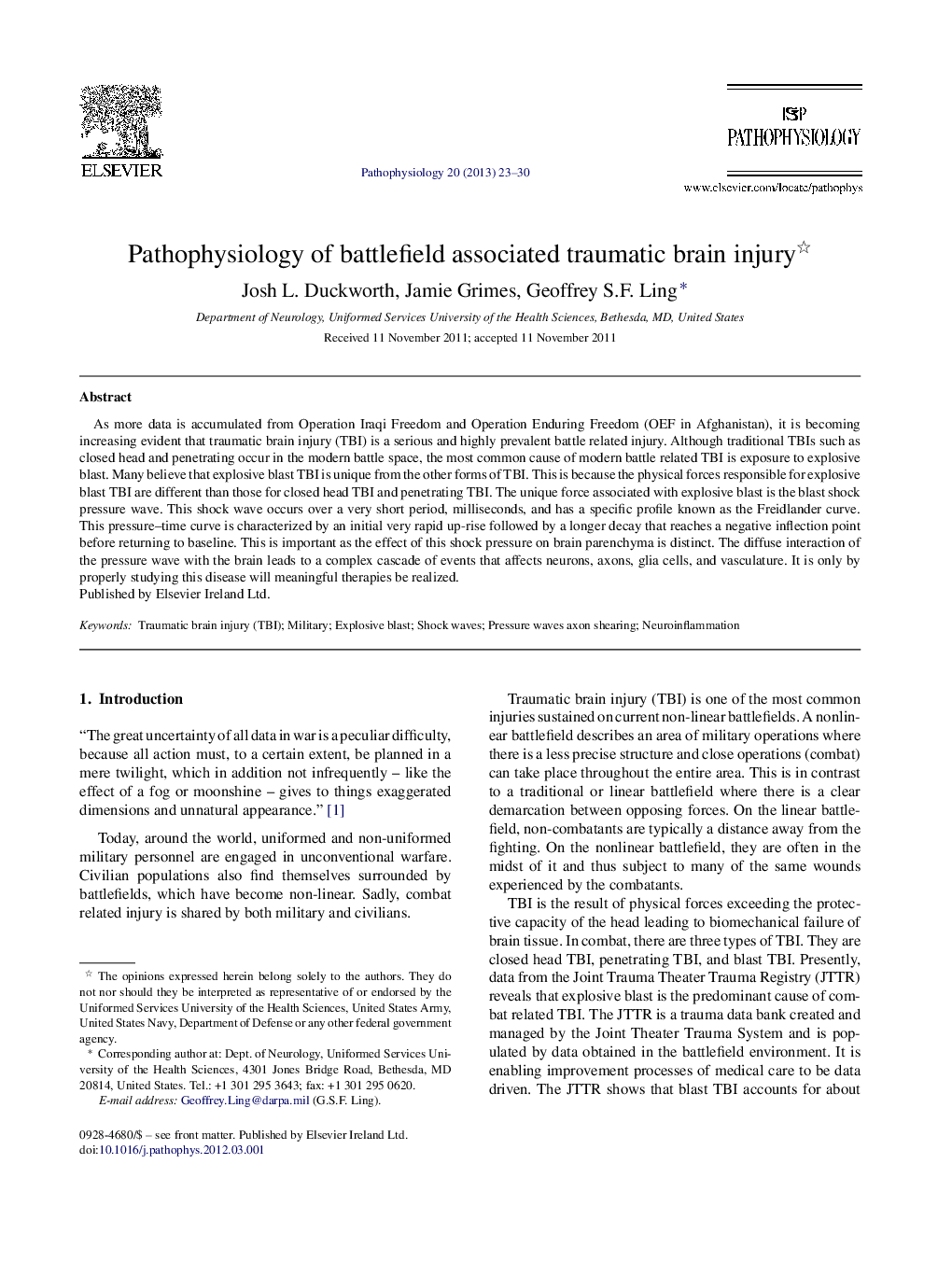| کد مقاله | کد نشریه | سال انتشار | مقاله انگلیسی | نسخه تمام متن |
|---|---|---|---|---|
| 4137066 | 1272004 | 2013 | 8 صفحه PDF | دانلود رایگان |

As more data is accumulated from Operation Iraqi Freedom and Operation Enduring Freedom (OEF in Afghanistan), it is becoming increasing evident that traumatic brain injury (TBI) is a serious and highly prevalent battle related injury. Although traditional TBIs such as closed head and penetrating occur in the modern battle space, the most common cause of modern battle related TBI is exposure to explosive blast. Many believe that explosive blast TBI is unique from the other forms of TBI. This is because the physical forces responsible for explosive blast TBI are different than those for closed head TBI and penetrating TBI. The unique force associated with explosive blast is the blast shock pressure wave. This shock wave occurs over a very short period, milliseconds, and has a specific profile known as the Freidlander curve. This pressure–time curve is characterized by an initial very rapid up-rise followed by a longer decay that reaches a negative inflection point before returning to baseline. This is important as the effect of this shock pressure on brain parenchyma is distinct. The diffuse interaction of the pressure wave with the brain leads to a complex cascade of events that affects neurons, axons, glia cells, and vasculature. It is only by properly studying this disease will meaningful therapies be realized.
► Explosive blast TBI is a third type of TBI, joining closed and penetrating TBIs.
► Today, the TBI suffered by service members is mild TBI and from explosive blast.
► Blast TBI from pressure or shock waves is biomechanically different than other TBI.
► Blast shock wave causes biochemical dysfunction and structural injury.
► At low levels, waves lead to axon stretching and neuroinflammation.
► At high levels, there is gross tissue injury, hemorrhage, vasospasm and edema.
Journal: Pathophysiology - Volume 20, Issue 1, February 2013, Pages 23–30